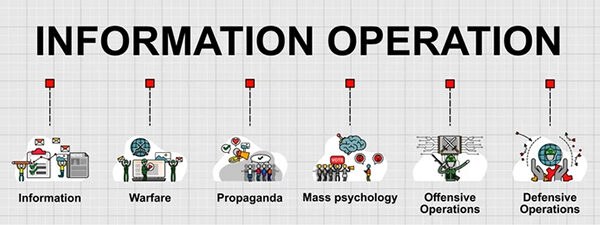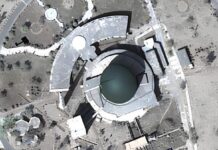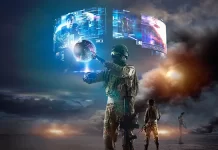
Changing Dimensions of Warfare
China’s Three Warfares Need to to be Countered
The changing character of war and its emerging dimensions which are often referred to as grey zone, non-contact, cyber, and information warfare, are fueling some serious debates/actions across the world and these aspects are now a part of every country’s war preparedness roadmaps.
War is essentially an offensive operation, waged upon the physical, political or psychological sovereignty of the enemy, through kinetic or non-kinetic means. The idea of warfare, as an art and science both is a constantly evolving domain but the pace of change that we are witnessing now is unprecedented in many ways.
While discussing information warfare, it is a sort of a formal practice to start with China and its popular ‘Three Warfares’ doctrine (an official political and information pre-kinetic warfare strategy of the PLA) published in 2003. But at the same time, we cannot afford to ignore what the former US Defense Secretary Jim Mattis indicated in 2009 when he said: “We need a new Strategic Concept that reconciles war’s grim realities with the human aspirations of our people and the global audience” and “capturing perceptions is the new high ground in today’s conflicts, as the moral is to the material as three is to one.” In 2018, it was under his command, the United States included ‘Information’ as the seventh joint function in its Joint Operations Doctrine (JP 3-0).
India’s National Security Advisor (NSA) Ajit Doval often talks about these global trends and shifts when he says that: “Civil society is the new frontier of warfare,” and it is “the common people, their thinking, their perceptions, their sense of well being and their perception of their own governments,” and everything that can impact the “will of the nation,” is under attack, in this new age of information revolution.
In the last few months, what India has witnessed what seems like a climax of information and psychological warfare! For the first time, we saw how a decision (Agriculture Reforms) passed through the democratic process, through elected representatives, was forced to roll back, after a massive misinformation/disinformation campaign against the ‘intent’ of the lawmakers. From money to ‘tool kit’ to support from foreign sources, everything was open done, yet the democratic mechanisms seemed ineffective to tackle that.
For the first time, we are watching Chinese propaganda video/pictures streaming through the social media handle of the leaders of the biggest Opposition party of the county and for the first time, an animated conspiracy to target the prime minister (operated from foreign lands) has flashed openly before our eyes, too. This is, by far, the most alarming phase of ongoing information warfare! And this encourages us to see where the root of the problem lies.
Information as a Weapon
Improvisations to shape, influence, control and manipulate information, in wartime are not new! From the invention of the World Wide Web, several parallel types of research were initiated, in the same bloc, to leverage the potential of information as a weapon, capable of targeting human minds, which once launched, no jammer can ever intercept.
The idea that information itself is not only a ‘potent weapon’ but a ‘lucrative target’ as well, dominated the US military literature/ discussions for decades. Several ideas/ research reports/ doctrines published during that time validate this fact, where the use of models ranging from historical case studies to futuristic scenarios on how information warfare has impacted or will impact the future of conflicts was elaborately explained. One such thesis “Information as a Weapon – Reality versus Promises,” published in 1999, mentioned that: “One characteristic of the US military and its way of war is its fascination with technology and the associated search for the high-tech silver bullet that will allow quick victories with minimal collateral damage.”
Since then the process of the search for ‘high tech silver bullet,’ went through several phases of evolution/ interaction and information exchange, an overview of which is therefore crucial!
Information, Communication, Feedback and Control
The concepts of ‘information’, ‘message’, ‘feedback’ and ‘control’, the foundational block of modern communication innovations, are the products of an in-depth research on the human and his biological, psychological, social, and behavioral aspects. But that research itself was not done under normal circumstances of human discovery, they were all initiated during the phase of Great Wars, either in pre-, middle-, or post-World War I & II period.
In his book ‘Cybernetics,’ Norbert Wiener classified communication and control together and the reason for this he gave was that “when I communicate with another person, I impart a message to him and when he communicates back with me he returns a related message, which contains information primarily accessible to him and not to me,” and “When I control the actions of another person, I communicate a message to him,” and “furthermore, if my control is to be effective I must take cognizance of any messages from him which may indicate that the order is understood and has been obeyed.” Thus, his thesis was that a “society can only be understood through a study of the messages and the communication facilities which belong to it.”
By looking at the history and background of present-day information technologies, one can say that the idea of ‘warfare’ is in-built, since its origin, in the very core of these systems, and the possibilities to exploit these capabilities for strategic objectives, were always there!
When an idea is capable of reaching the masses, influencing their perceptions and, in some cases, regulating their consciousness too, confining it to the battlefield, is an impossible task and most certainly a fake claim too!
In a 1997 interview, Dr. Daniel Kuehl, professor of military strategy, School of Information Warfare and Strategy, US National Defense University said, “The computer, telecoms systems, etc, are hardware; the instructions that guide the computer, i.e., Windows 95, is the software; the human brain is the wetware, and it’s the most important element in Information Warfare (IW). Until and unless we get truly intelligence agents and AI, all the hard/ software won’t matter, because the final decision point is the brain – the wetware.”
Here the word ‘wetware’ refers to the new battlefield’s focus area, which is also called the “grey matter” of the brain in which opinions/ perceptions are formed and decisions are made.
9/11- A Turning Point
In many ways, September 2001 attacks gave a major push to US IW efforts. This realization that the time gap between the two aircrafts crashing into the twin towers of the World Trade Center was wide enough (18 minutes) to allow for live TV coverage of the second crash, cannot be a mere coincidence. It fueled a new debate about asymmetrical warfare, where the speed and reach of information technology can be exploited to attain the core objectives of IW.
It is important here to note that IW, as a concept, is technology independent and its operations can be conducted via any form of media, not just cyberspace. After all, it all started with leaflets dropping campaigns (Airborne leaflet propaganda or letter-bombs), radio broadcast, and printed propaganda in World War I and II.
But what has changed now is that the hallmarks of the information revolution, i.e., transparency, immediacy, reach, scale and element of exactitude that internet technologies provide, have accelerated the impact of Information operations to a different level! As Dr. Daniel Kuehl explained, “The new medium of cyberspace offers a particularly rich environment through which we can reach those elusive targets, the enemy’s will and capability, via the various entryways and connecting points in the information environment, whether they be hardware, software or wetware.”
Post 2010 – Shift From ‘Platforms’ to ‘Cyber’
With a shift from “computer as a platform” (systems and networks) to present day “cyberspace,” technology’s role in measuring, monitoring, predicting and deciding the trends and perceptions, a critical aspect of information warfare, is moving toward a different level.
‘Cyberspace’ made the nations awaken to the reality that information, as an element of power, is the most cost-effective and useful force at all levels. Some believe that the explosion in computers, telecoms and media technology changed the traditional notion of Power itself.
For over a decade, a different kind of proliferation of Information assets is going on and it is not the USA alone, defence experts from China and Russia, studying this new warfare area at a feverish pace as they were also on a similar search for the “perfect weapon” in information warfare, are also participating in it.
Russia
In Russian military doctrine, IW is considered as an integrated whole-of-systems working together that includes, intelligence and counter-intelligence gathering, Maskirovka and disinformation, Electronic Warfare (EW) systems, psychological pressure, etc. Their contemporary research and published works on this subject highlight exploring the Information-psychological component of IW. Information-psychological impact (IPI) is “the informational influence on people’s minds, which alters their perception of the reality, behavioral functions and, in some cases, even the functioning of their inner organs and body systems,” as mentioned in “Modeling the Information-Psychological Impact in Social Networks” research paper, published by some Russian scholars, in 2019. The paper highlights the diffusion process of IPI in social media platforms.
Russia started well, gained some momentum on some points as well but a lack of an overall edge, in the world of the Wide Web, is quite apparent!
Technology suits the psyche of another big player, who traditionally prefers ‘stratagem’ over real war and valor and whose strategists are often quoted as the founding fathers of IW.
China – From ‘Three Warfares’ to ‘Intelligentized Warfare’
In 2003, China revised its “Political Work Guidelines of the People’s Liberation Army,” to include its ‘Three Warfares’ strategy, in which public opinion or use of media, psychological means and legal warfare, kind of ideas were highlighted. There are views that all three dimensions come under China’s larger ‘political warfare’ strategy, which has been in play for quite a long time.
In an opinion article “Why is Congress hiding its MoU with China’s Communists?” published in New Indian Express in August 2020, A. Surya Prakash, former chairperson Prasar Bharati wrote, “The news about the MoU entered into by the Congress party with the Communist Party of China (CCP) in 2008 has now become a matter of concern because of two pertinent reasons. Firstly, the Congress is just not willing to disclose the contents of this MoU with the CCP, which not only controls the Chinese government but runs that country in every sense of the word. Secondly, there is the news about donations received by the Rajiv Gandhi Foundation (RGF) from the Chinese Government.”
From 2008 to 2018, the entire approach to political warfare has undergone a major shift and in this change, technology is a leading factor! Similar kind of psychological blows that mainstream activities and media headlines used to create before is now possible through a mere tweet, post or video circulated live on the Big Tech platforms, and whose response/ reactions data/ analytics are available in a real-time manner. One can say that these self-learning algorithms and their ‘general intelligence’ are the most lethal weapon in this new age of IW!
In recently released US Department of Defense’s annual report on Chinese Military Power, China’s growing focus on developing the next generation warfare capabilities that include the use of more “mechanized, informatized, and intelligentized” systems with the help of specific emerging tech including AI and the use of AI for social media analysis and propaganda are highlighted too.
Post 2017 – Alpha GO’s win
Dr. Kai Fu Lee, the author of the book “AI Superpower”, writes that the AlphaGo’s victory over Chinese Go champion “lit a fire under the Chinese technology community that has been burning ever since.” AlphaGO is a Google DeepMind lab product, that plays the board game Go. In May 2017, in a well-orchestrated and widely covered event, AlphaGo won against Chinese Go champion Ke Jie, in all three rounds.
From 2017, China has accelerated the pace of AI investment and R&D activities on a historic scale. It is interesting to note that in less than two months of Ke Jie’s defeat by AlphaGo, the State Council of China launched the vision “A Next-Generation Artificial Intelligence Development Plan.” It describes AI as a “strategic technology” that has become a “focus of international competition” and projected that “by 2030 China would become the center of global innovation in artificial intelligence, leading in theory, technology and application.”
With this, a new kind of information warfare race started between the USA and China, in which China appears to be leading. In October 2021, a senior Pentagon official resigned with a warning to his fraternity that “the US could not compete with China on AI.”
Both sides have not just Big Tech and Big Data but Big Ambitions as well and, backed by intelligent systems, their maneouvres can accelerate this new age warfare to a different level.
The Case of Bharat
Now the question is where does Bharat stand on this? And do we have the emerging patterns and changing character of warfare in sight?
In a recently delivered “33rd IB Centenary Endowment Lecture on Redefining Security,” External Affairs Minister S Jaishankar, perfectly summarized the need to reimagine the security scenario and approach to protect national interests, due to the reasons he tweeted as:
1. Possibility of unrestricted political warfare involving more capabilities and their greater exercise. Also linkaging of autonomous sectors for political messaging.
2. Growing challenge of borderless politics, played for the benefit of few, in the name of many. Is shaping narratives and perceptions impacting security.
3. Securitizing of the routine through a web of technologies, activities, and instruments, often without user awareness.
4. Factor in surveillance capitalism and enterprises with mega-interests.
And he said: “It is important to be clear-eyed about the world we live in and confident about what we want. Must bear in mind we are an open society. Our values must always come out stronger.”
Clarity about the present and future trends of warfare is very much there in our current system. But we will be able to better analyze the issues when we will see them with a multi-dimensional, open-minded perspective.
Power is a reality and information becoming a new dimension of power is a reality too! At this moment, our focus is more on the Chinese side but we must be cautious about the fact that somewhere our incapability to not see the full picture can itself be a part of the strategic calculations of others.
We live in a complex world, where the nature of alliance/ partnership is becoming more and more ad-hoc, open-minded and issue-based. When analyzing the information warfare scenarios, we must have to adopt an eyesight that views all players, be it the USA, Russia, China, France, Germany, UK or any other active participant of global politics, on the same level.
In Arthashastra, Kautilya says: “of the three acquirements – enthusiasm, power and skill for intrigue, he who possesses more of the quality mentioned later than the one mentioned first (in the order of enumeration) will be successful in over-reaching others.”
To craft the strategy in this new warfare, the more we will look inward, the better we will perform.


















